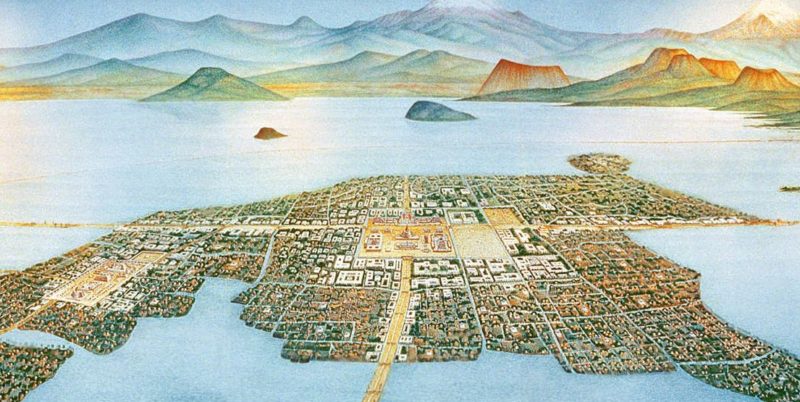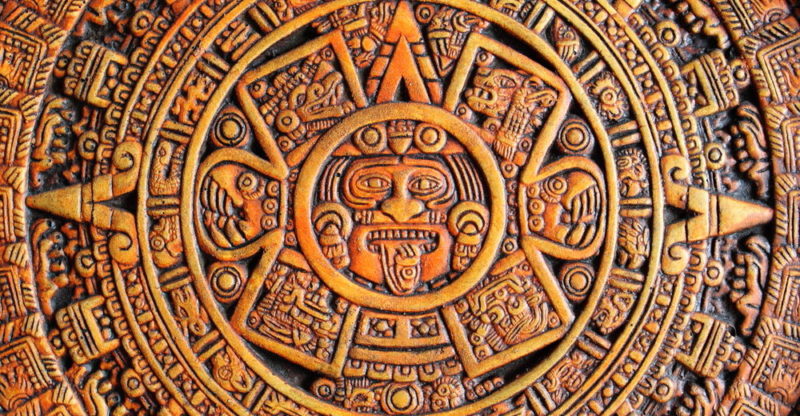We explain everything about the Aztec Civilization, its origin and its main characteristics. In addition, their social organization and their contributions.
What was the Aztec civilization?
The Aztec civilization was a prosperous Mesoamerican people that settled in the central and southern territory of present-day Mexico City , between 1345 AD. C. and 1521 d. It became the dominant culture of the region until the arrival of the European conquerors.
The Aztecs, also called Mexica, were one of the main pre-Columbian civilizations , along with the Olmec , Toltec and Teotihuacan cultures . They reached their maximum expression under the condition of empire that lasted until 1521 AD. C., after the beginning of the war against the Spanish conquest.
Origin of the Aztec civilization

The origin of the Aztec people is somewhat uncertain, but traces of their tradition suggest that they were hunters and gatherers on the northern Mexican plateau before they reached the Mesoamerican region around the 12th century AD. C.
The term " Aztec" , from the Nahuatl language, meant "people who came from Aztlán." The Aztec people left Aztlán and wandered for several years before permanently settling in the territory of present-day Mexico City and its surroundings.
They settled on islands on Lake Texcoco and from 1325 AD. C. founded the city of Tenochtitlán, which became its main center. They formed alliances with the neighboring states of Texcoco and Tlacopan until they became the dominant power in central Mexico.
Aztec rule was based on military performance and war that allowed the advancement of culture to become an empire. The town was administered by the priestly and bureaucratic classes of society .
The formation of the Aztec empire arose after the alliance between three great cities : Texcoco, Tlacopan and Tenochtitlán. Through military centralization, the Aztecs achieved the coexistence of the three cultures that had some differences between them.
In addition to military despotism, the basis of Aztec success was its remarkable system of agriculture which consisted of intensive cultivation of all available lands along with elaborate systems of irrigation and reclamation of wetlands.
Characteristics of the Aztec civilization

The Aztec civilization was one of the pre-Columbian peoples best documented by archaeologists due to the large quantity and quality of the finds. The Aztec civilization was characterized by:
- The architecture . The Aztecs appreciated fine arts , from miniature engraved precious objects to huge stone temples. The sophisticated development in architecture andmonumental sculptures stood out, such as the colossal Coatlicue statue (its name means "skirt of serpents") and the sculpture of seated Xochipilli (the god of love and beauty). They used art as a way to signify and spread the imperial power of Tenochtitlan, in works such as the Stone of the Sun, the stone of Tízoc and the throne of Motecuhzoma II, which portrayed Aztec political ideologies linked to cosmic events and the gods. They stood out for the construction of temples, such as the pyramid of the Templo Mayor.
- The religion. The Aztecs, like most pre-Columbian cultures , practiced a common bond between mythology and religion. The city of Tenochtitlan functioned as a mythical center and, according to Aztec beliefs, the god Huitzilopochtli had shown them the way to build the ceremonial center in that city, through an eagle that had perched on a cactus. The god, in addition, had baptized them as "the Mexica" and, together with other ethnic groups that also spoke the Nahuatl language, they formed the great people known as the Aztecs.
The Aztecs worshiped multiple gods, although the main ones were Huitzilopochtli (the god of war and the sun) and Tláloc (the god of rain).
- Astronomy . The Aztecs were noted for their knowledge of astronomy. They considered that the world had passed through a series of cosmic eras in which each had its own sun. The era corresponding to the Aztecs was the fifth and was represented with the colossal Stone of the Sun that symbolized the conception of time, but not as a calendar. It is one of the most representative pieces of knowledge in astronomy reached by the Aztecs. In addition, they had identified various constellations, such as the Pleiades and Ursa Major, which they used as a reference to diagram their time cycles. They recognized two groups of stars: the northern group called Centzon Mimixcoa(meaning "four hundred cloud serpents") and the southern group called Centzon Huitznáhua (meaning "four hundred southerners").
Social organization of the Aztecs

Aztec society was made up of castes headed by a priestly nobility who also led the military class. The rest of the town considered commoners (also called macehualtin ) carried out the heaviest tasks in both agriculture and construction.
There were clans made up of families of common descent , who held vast communal lands, an internal government, and a training school for young warriors. These groups were called calpulli, which meant "big house."
The calpullis were a complex social unit that emerged from the union of various Nahua communities that shared a bond with an ancestor (it used to be a tribal god). The city of Tenochtitlan was divided into four sectors and each one had several calpullis.
Contributions of the Aztecs
The Aztec civilization made important contributions to subsequent civilizations. Among the main contributions are:
- The numbering system. They developed a vigesimal system based on the counting of 20 units represented by a series of symbols, such as the point, the rhombus, the flag, the sun and a sack of corn .
- The solar calendar. They created a calendar called Xihuitl that was based on 365 days of the solar cycle, divided into 18 months of 20 days each and 5 additional days that they dedicated to ceremonial activities to welcome the new year.
- Medicinal Herbology. They studied the medicinal attributes of plants and their extracts. In addition, they looked at the human body and did important research on how to heal various health problems.
- Cocoa beans were very valuable to the Aztecs. They used them as exchange currency and to prepare drinks, among other uses. Upon arriving in America , the Spanish added sugar to it and created chocolate similar to the one that exists today.
Passionate about understanding and contributing to a world that does not stop changing. New forms of Work, Sustainability and Technology. For many years he has worked as a creative for large international companies. He has a Ph.D. in information technology and he has been doing quantitative research in the interdisciplinary areas of information systems, cyber security, data analytics and artificial intelligence. He continue to look for creative solutions through technology to help companies to be more humane and sustainable..
Leave a reply
Your email address will not be published. Required fields are marked *Recent post

Sport: What Is It, Types, Risks, Features, Characteristics and Examples

Dogs: Emergence, Features, Characteristics, Feeding and Breeds

Story: Definition, Elements, Structure, Features and Characteristics

